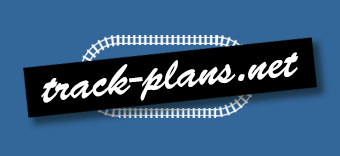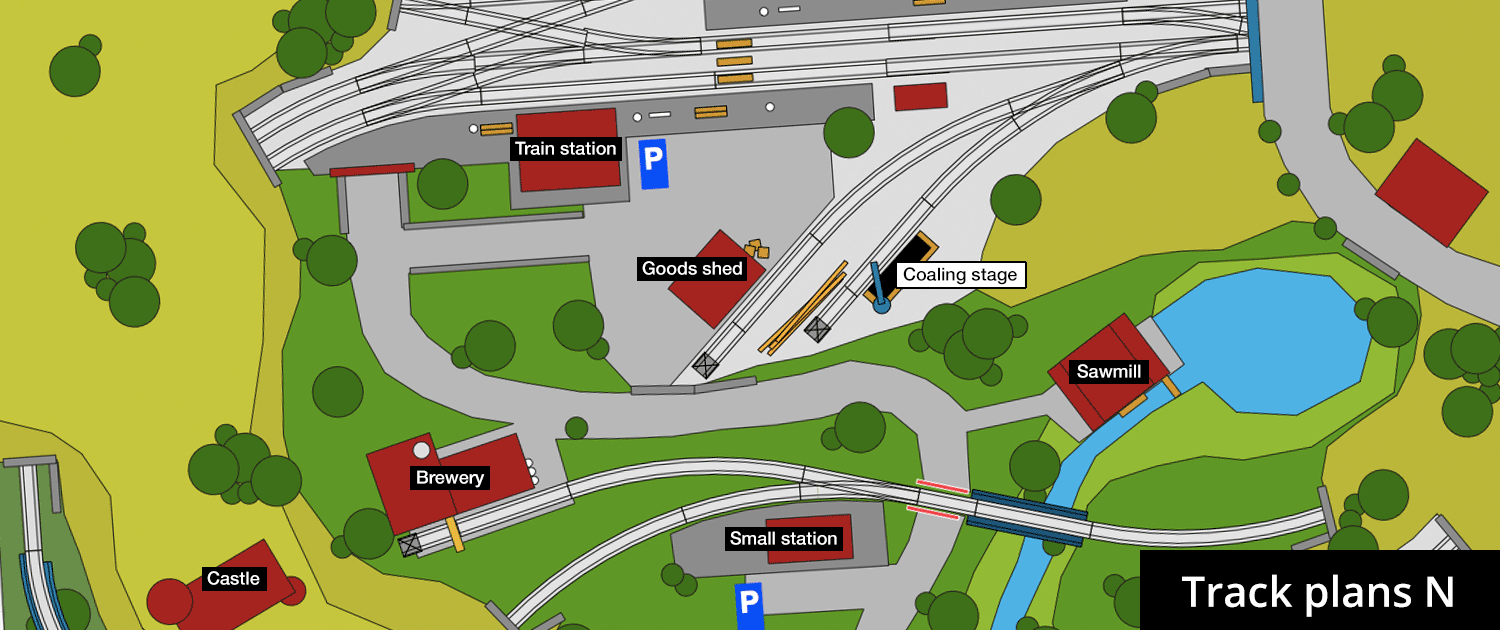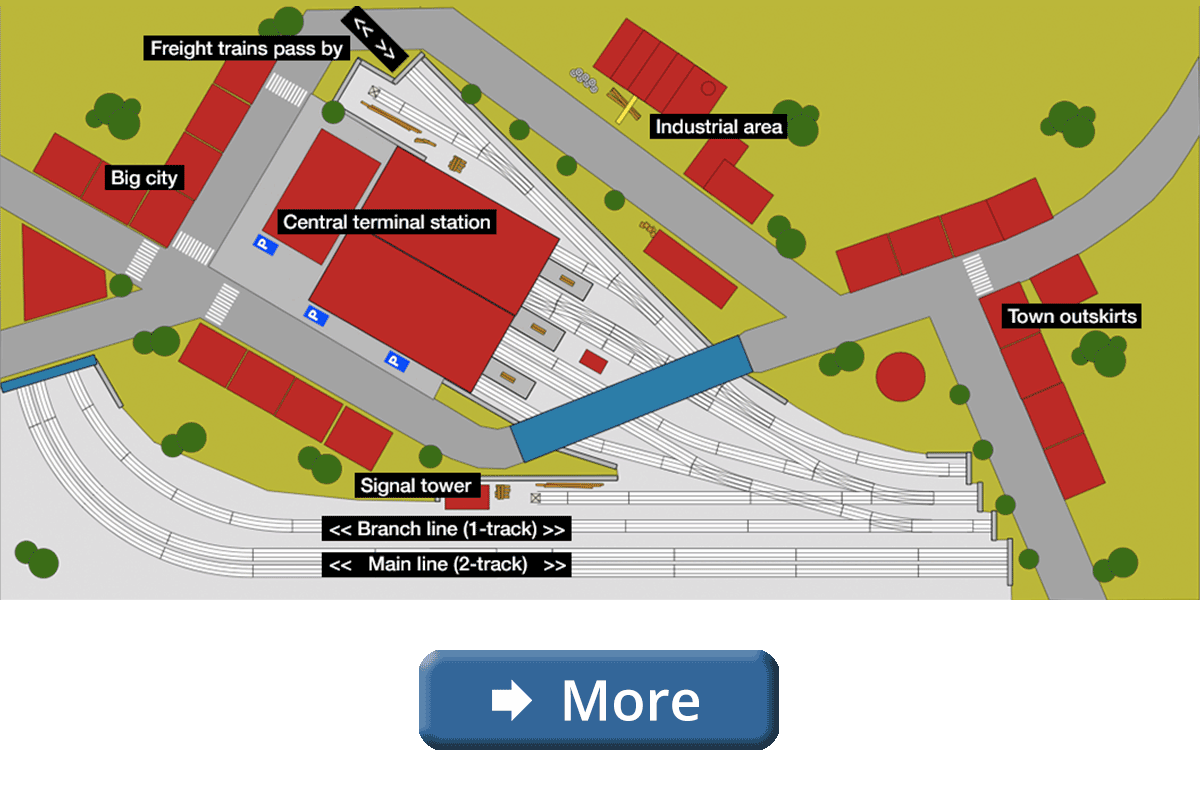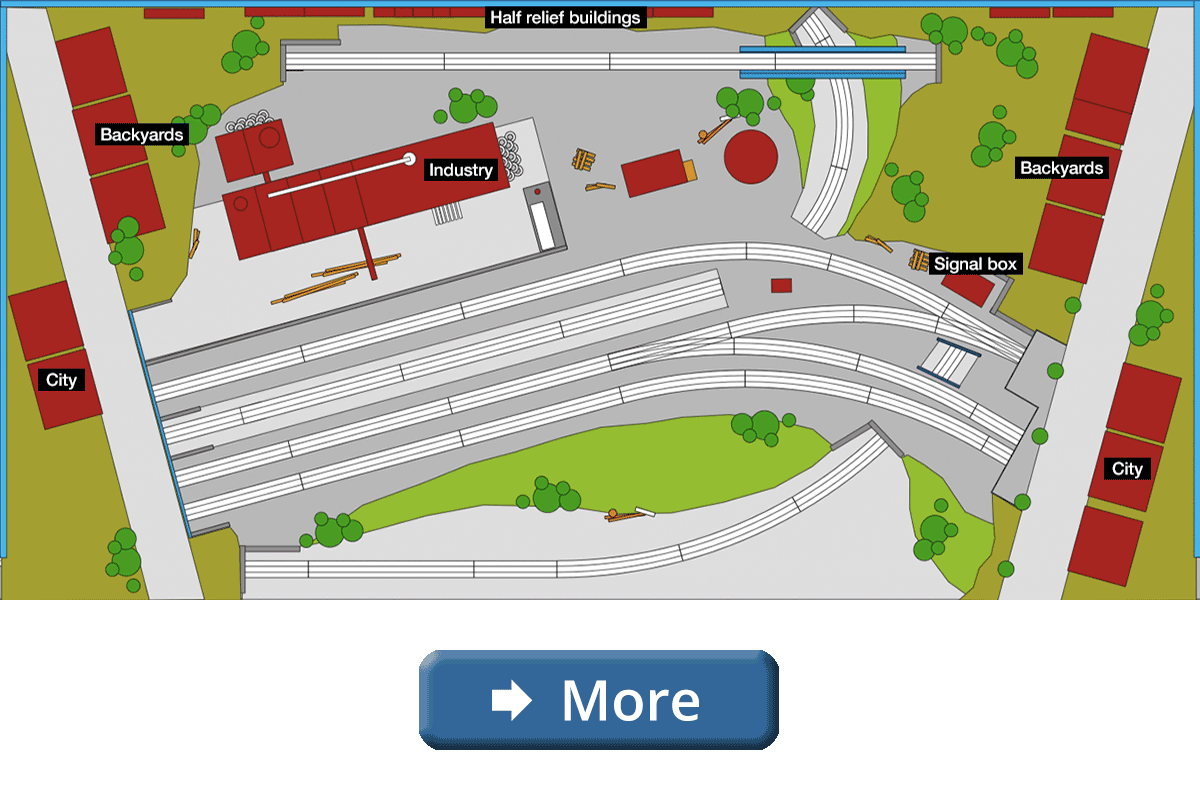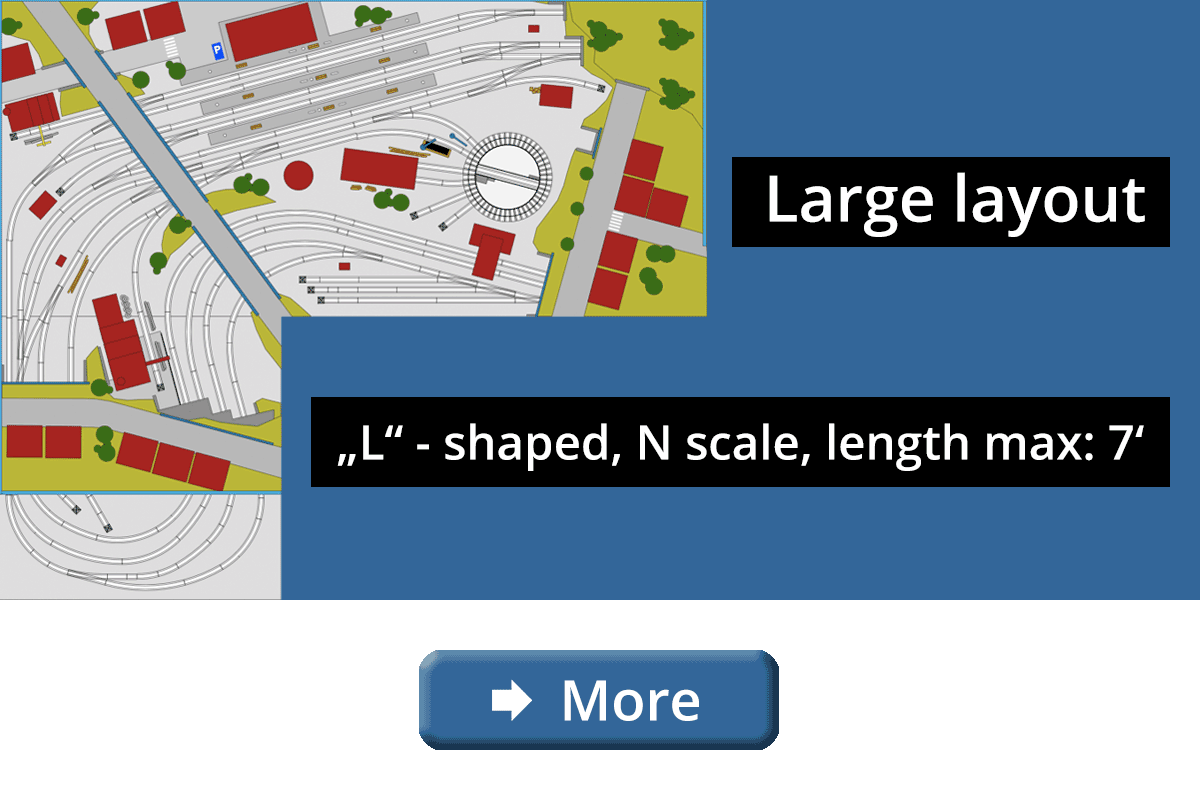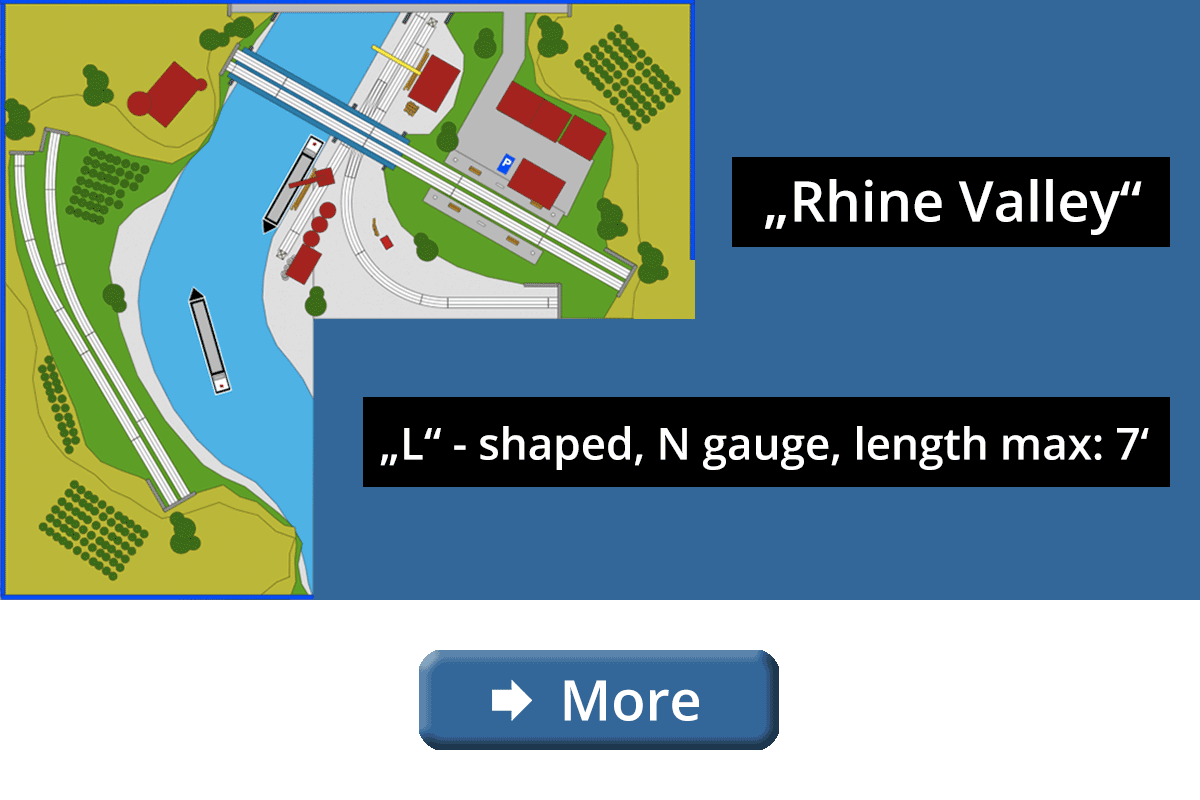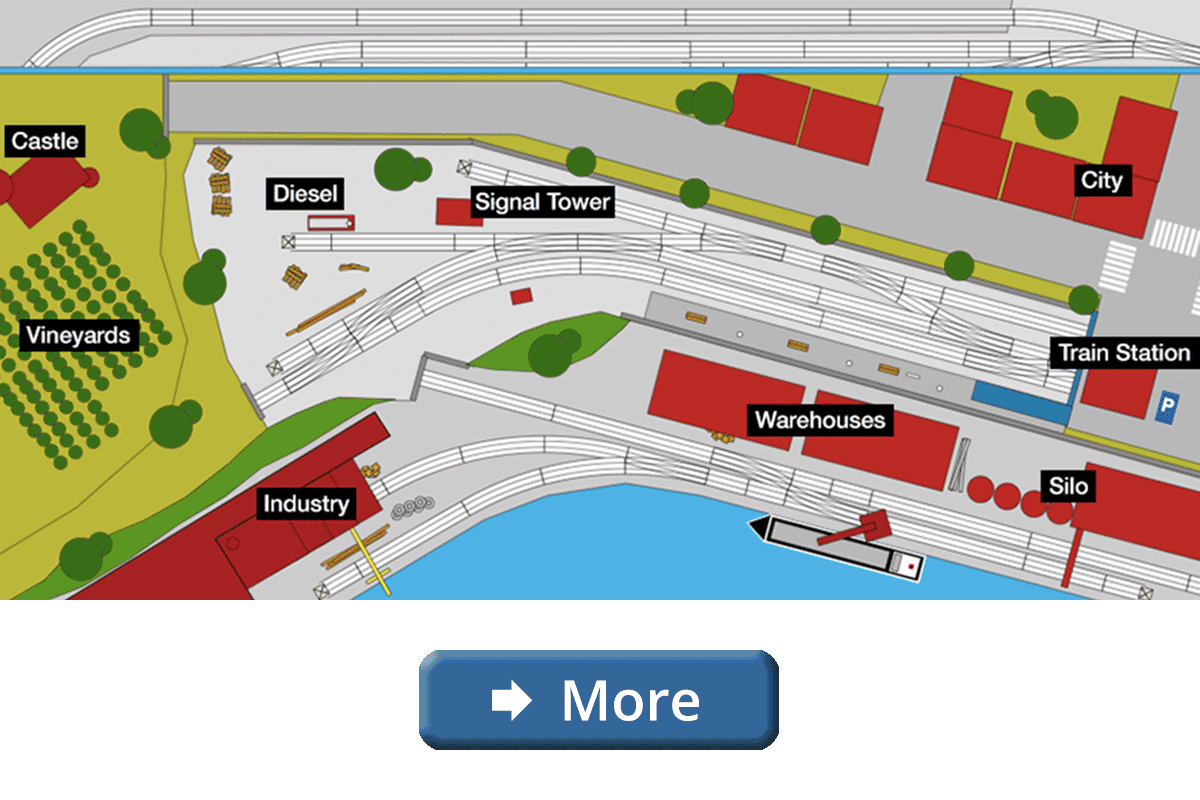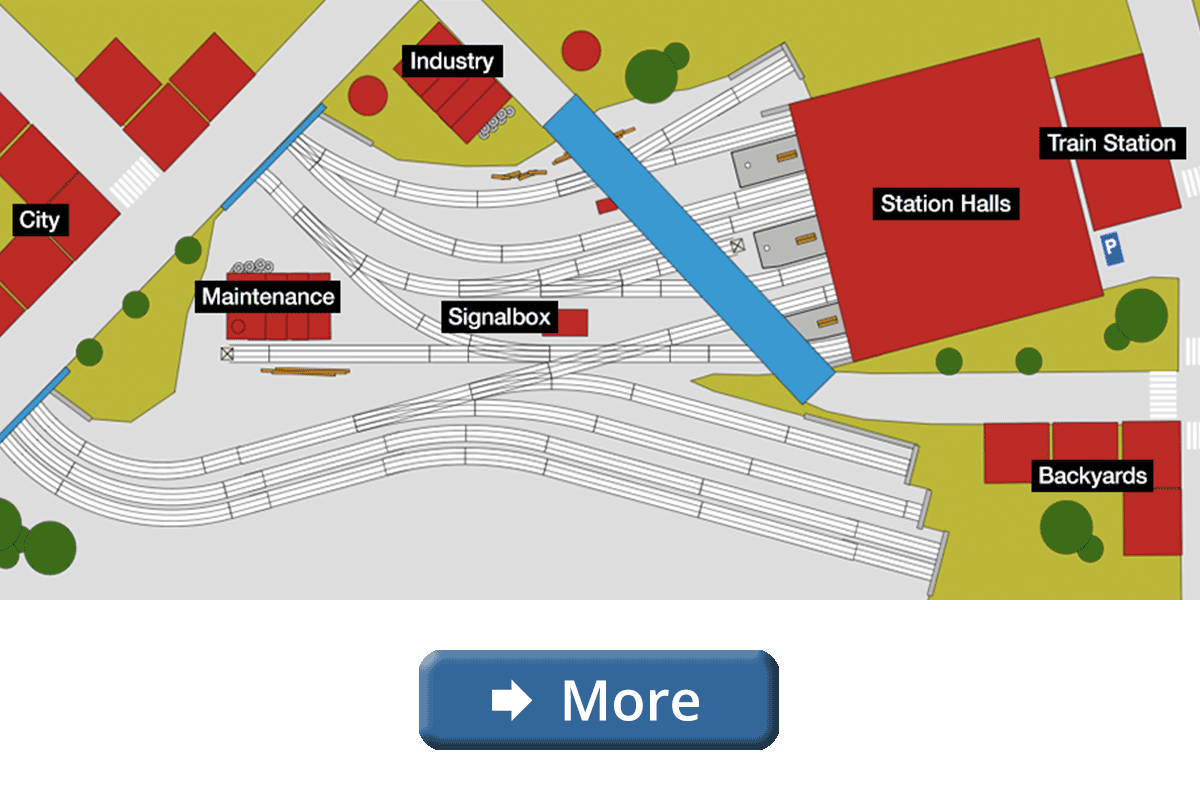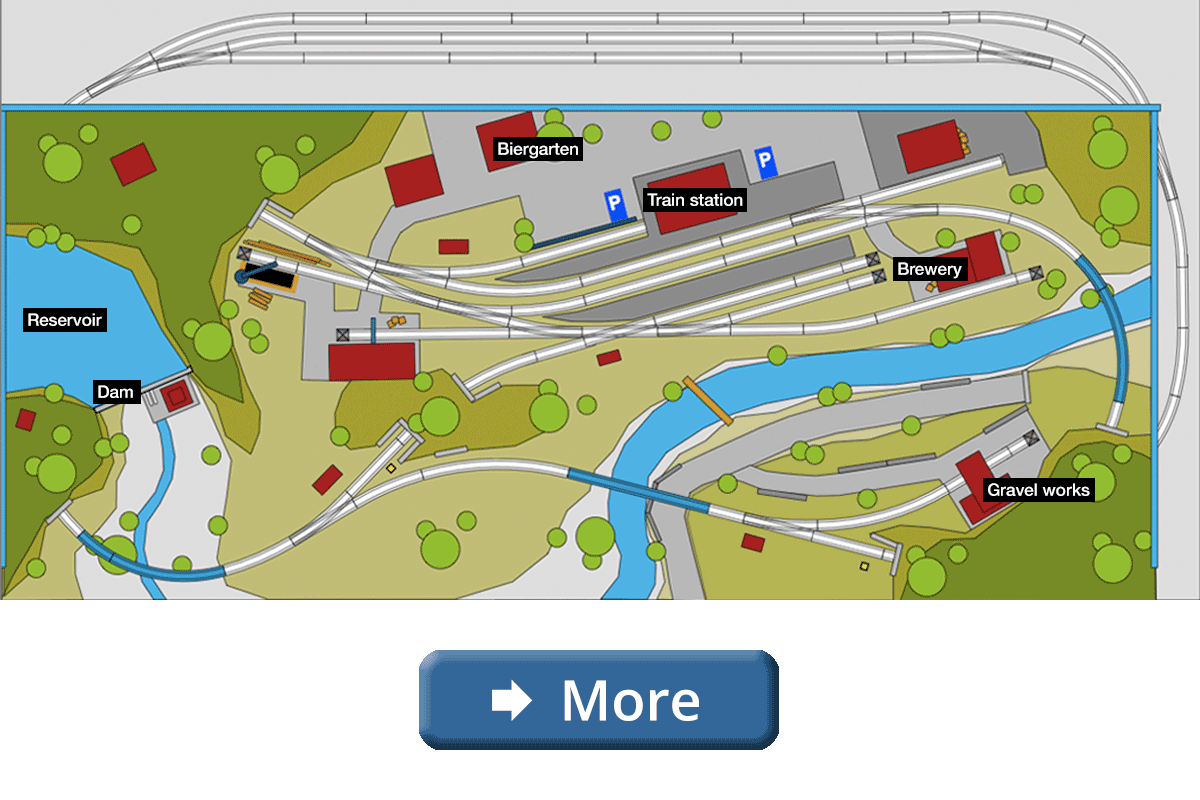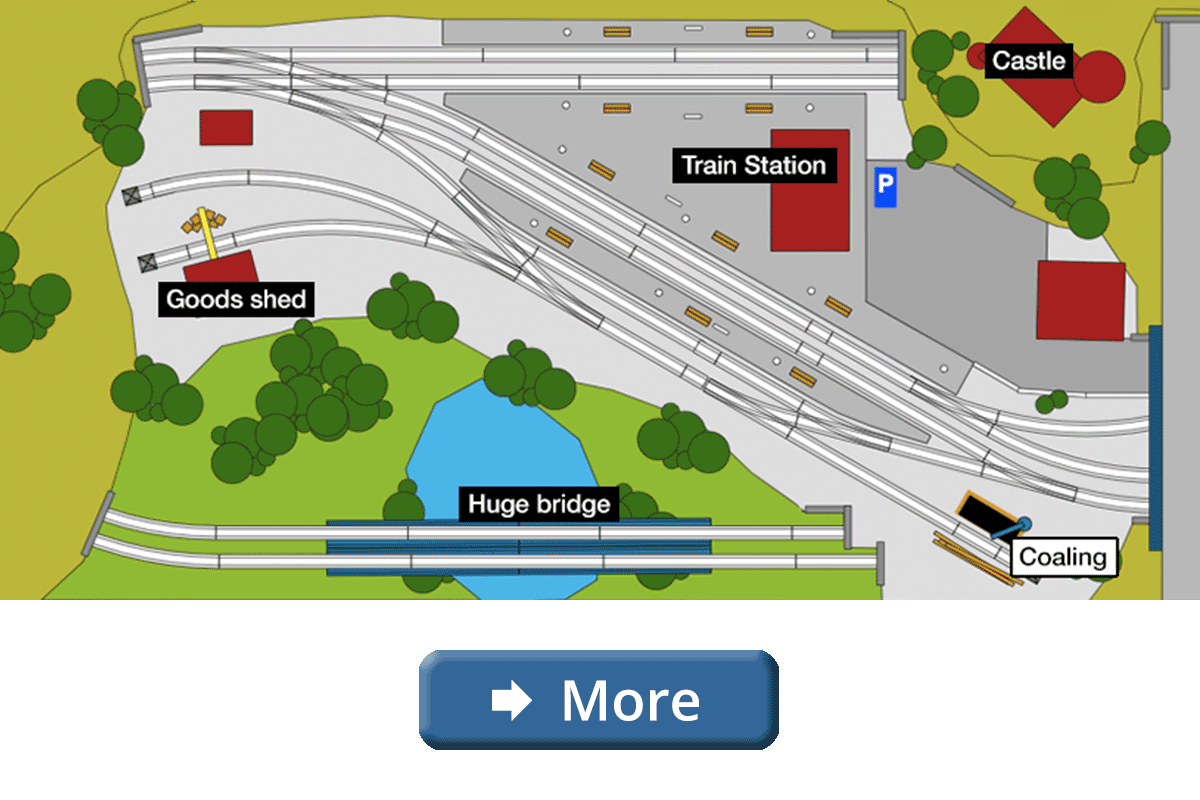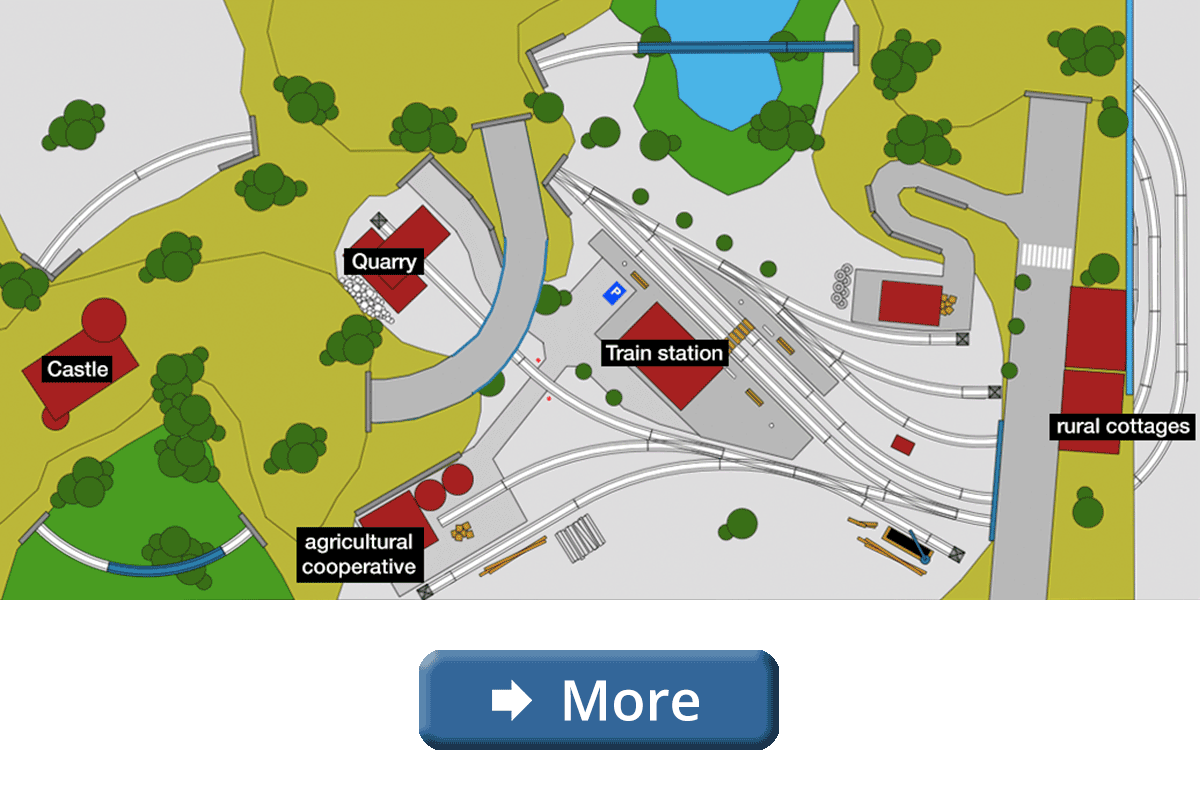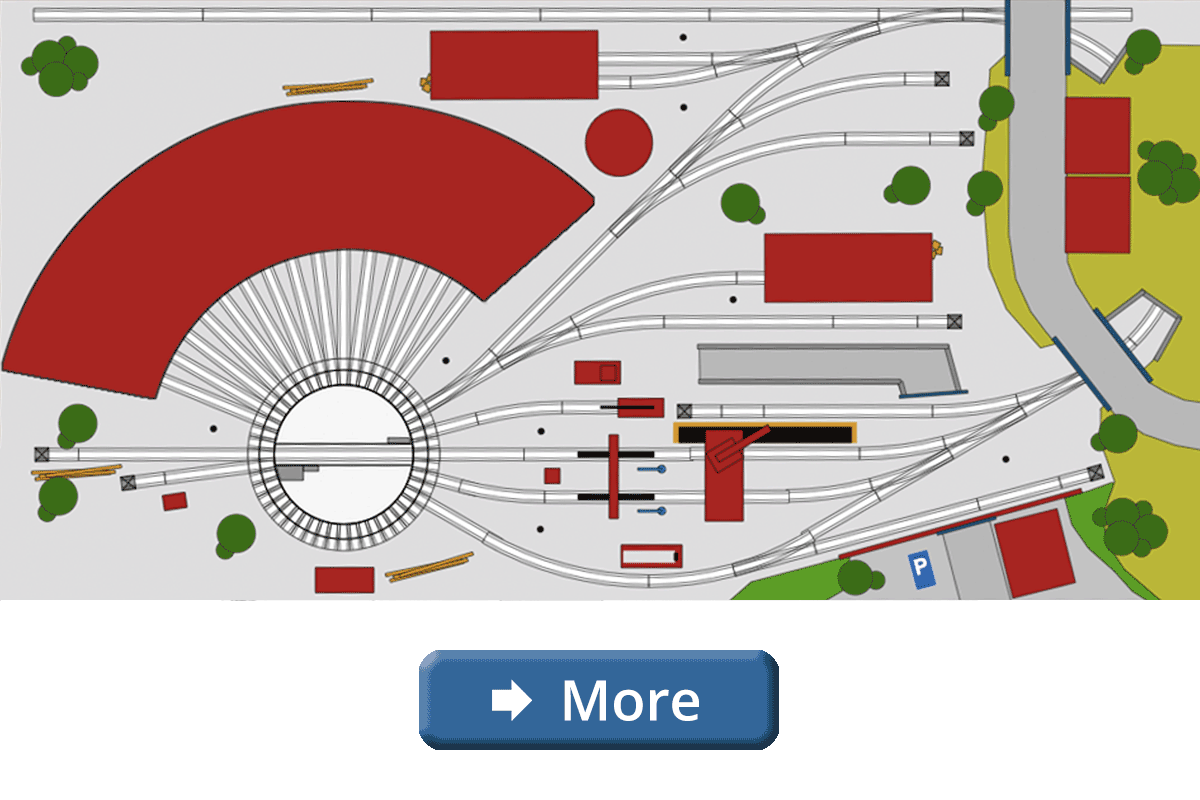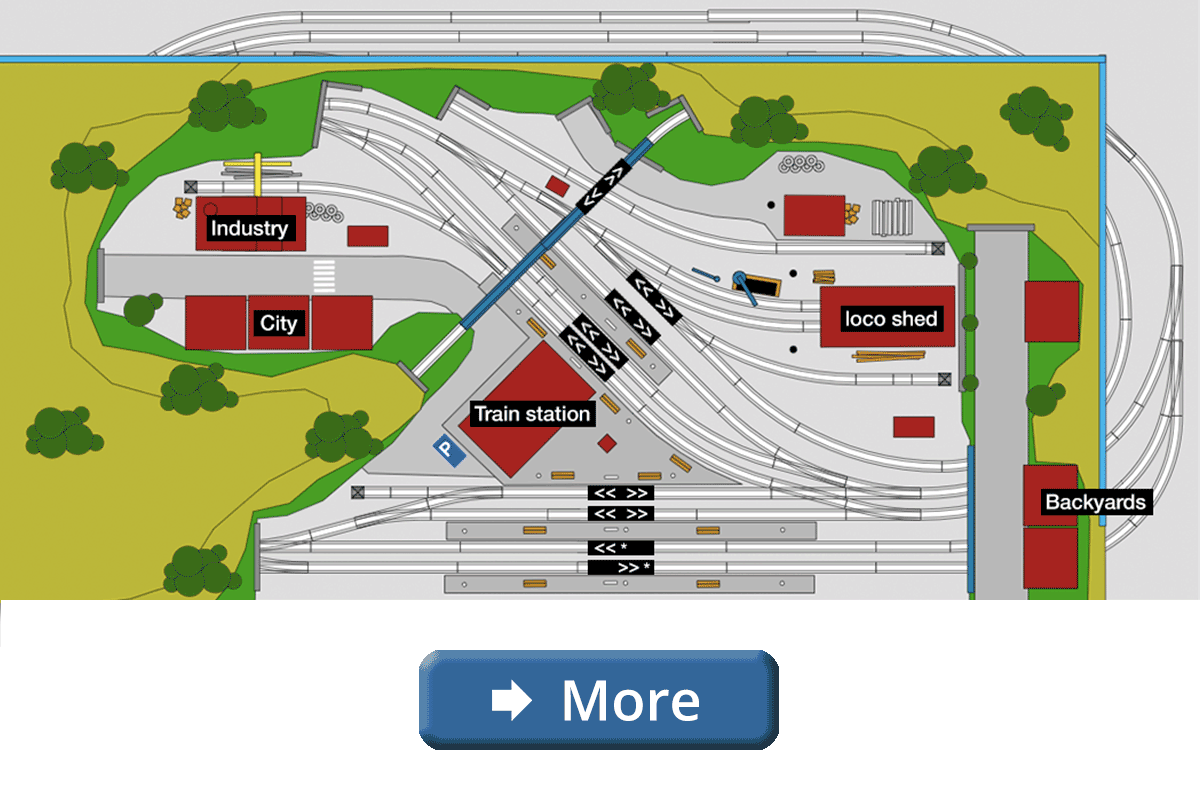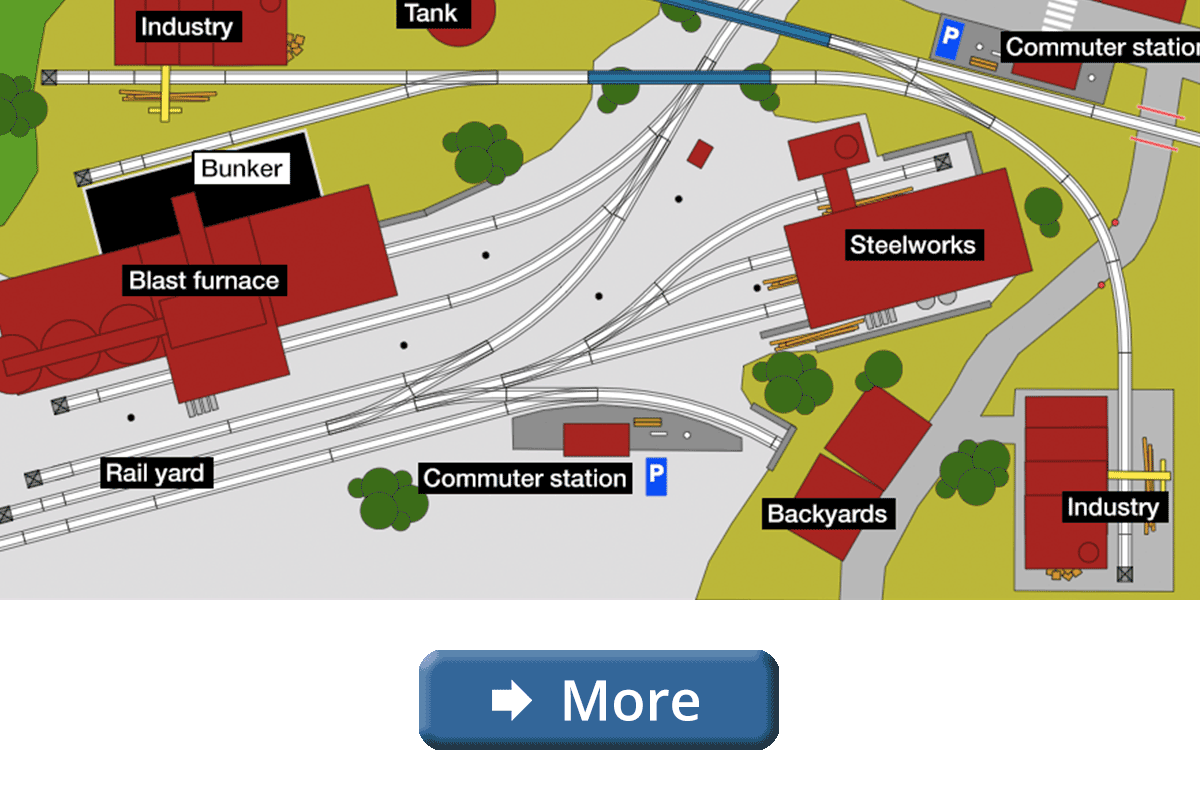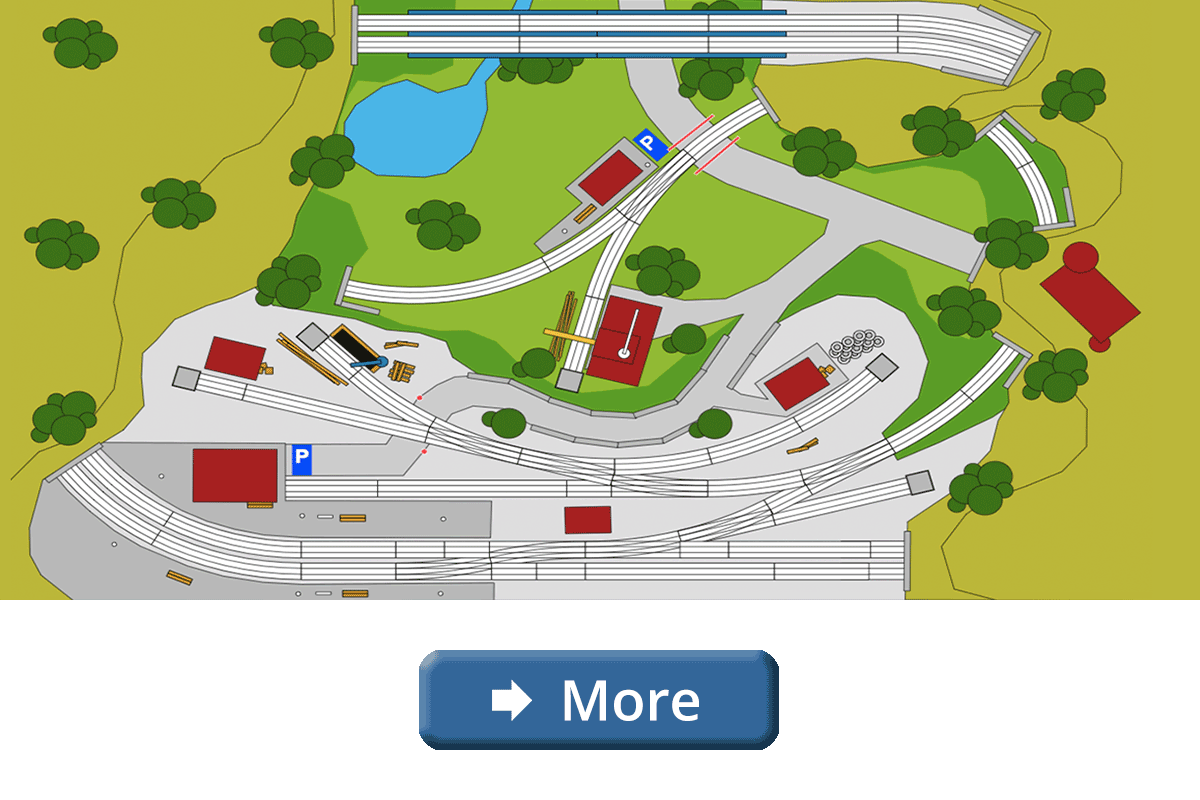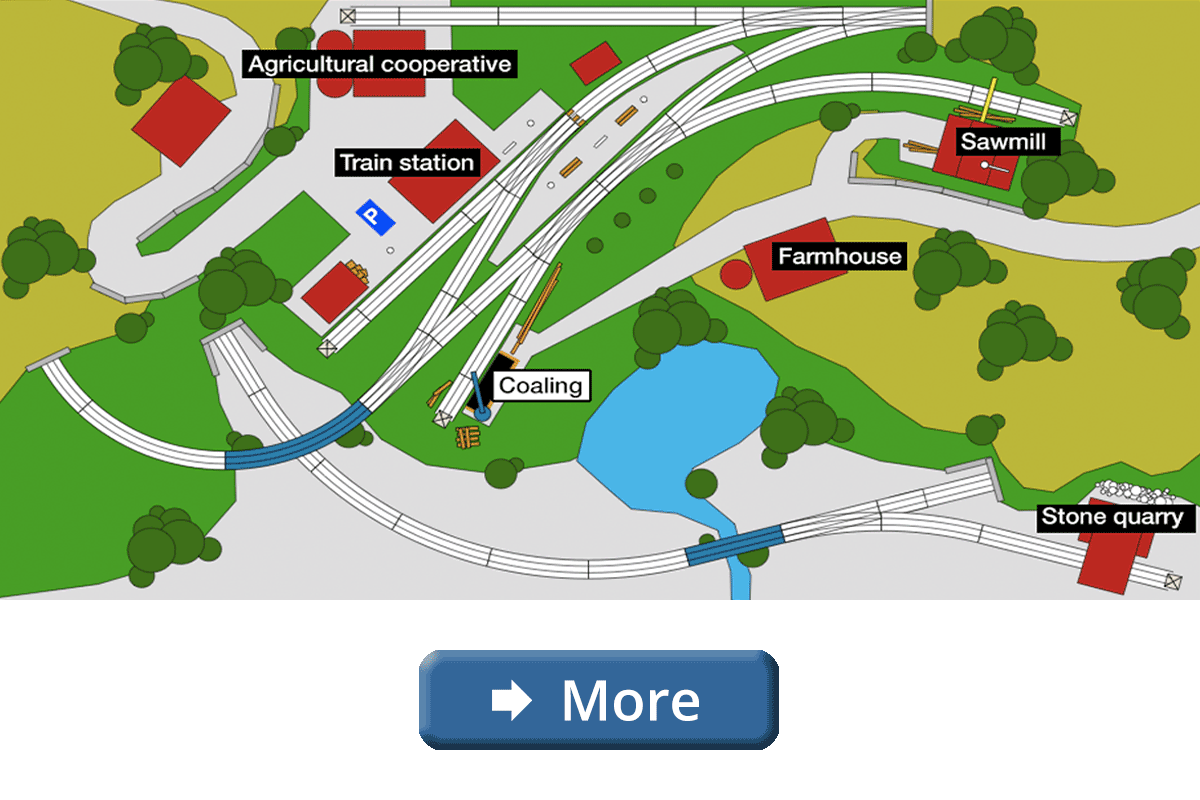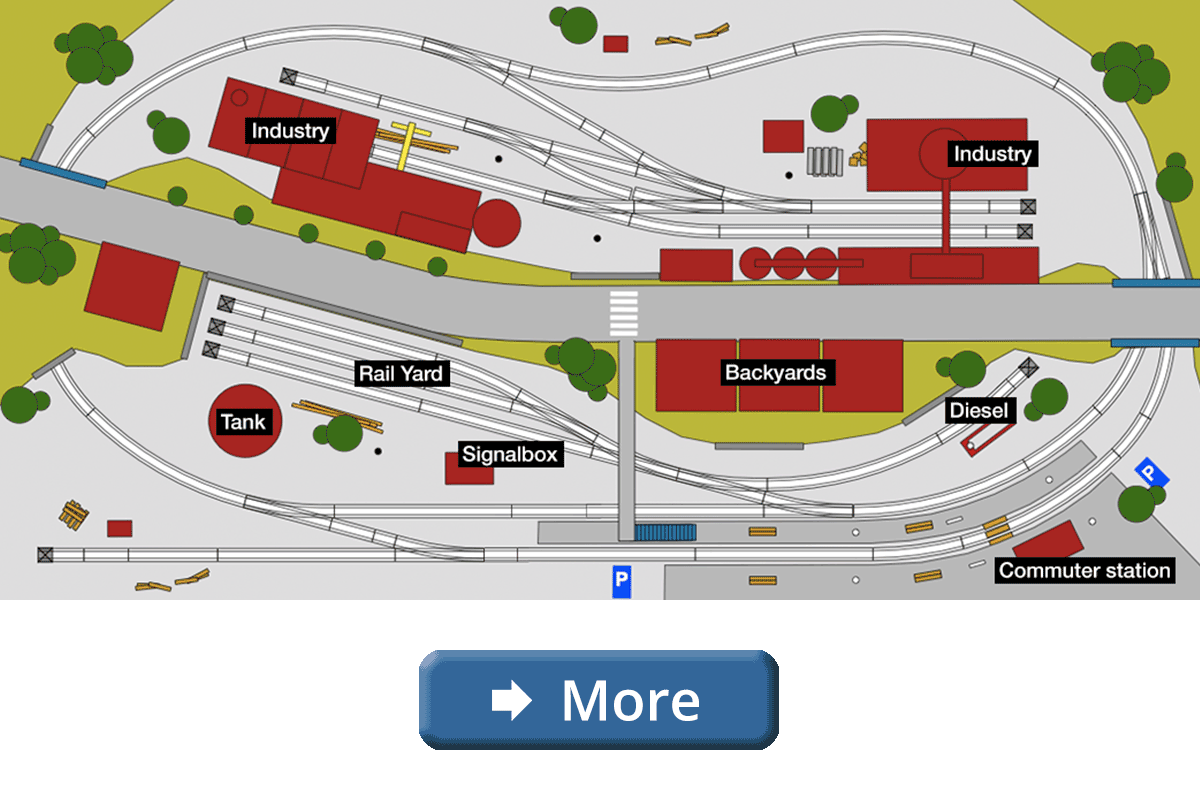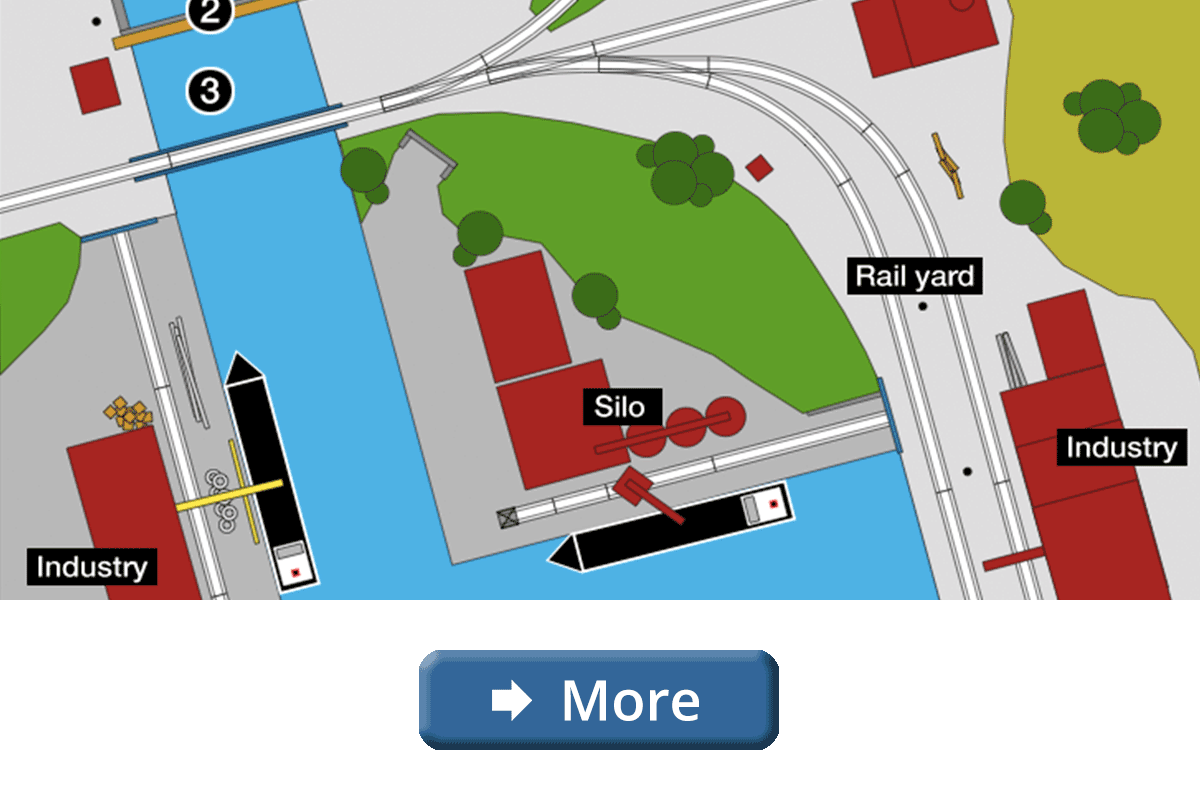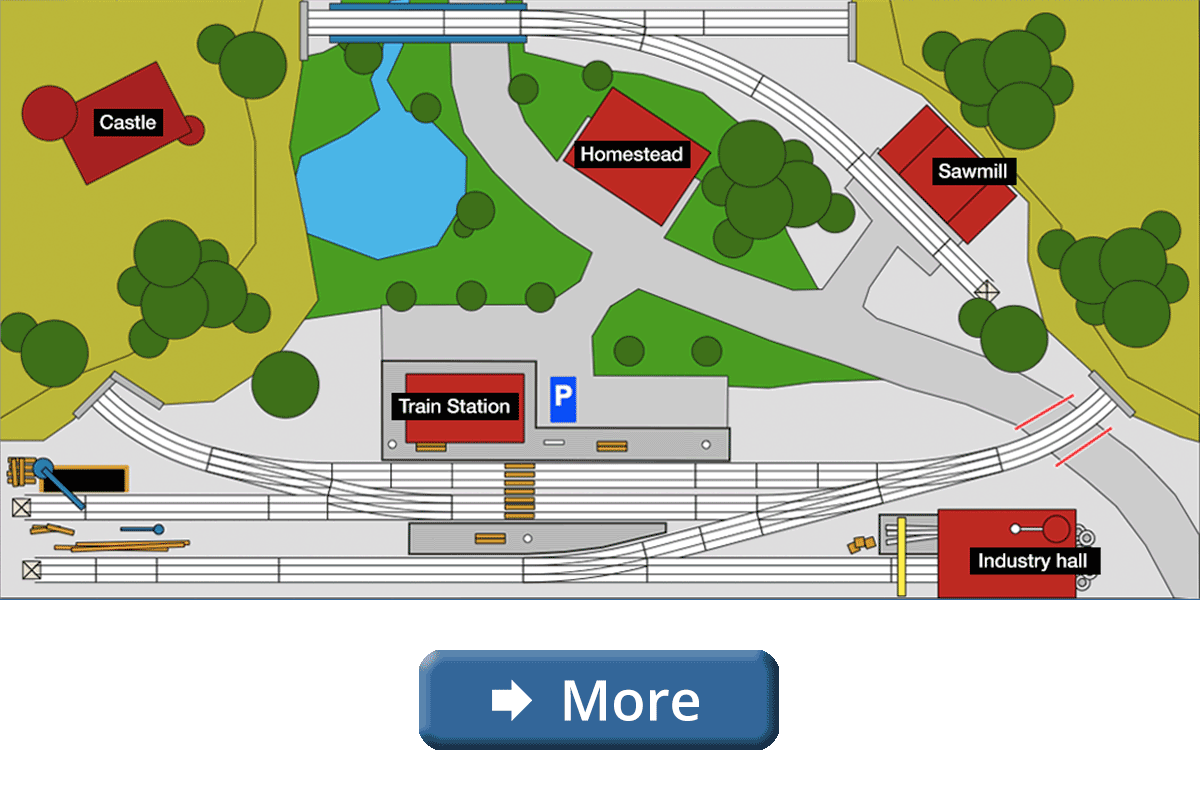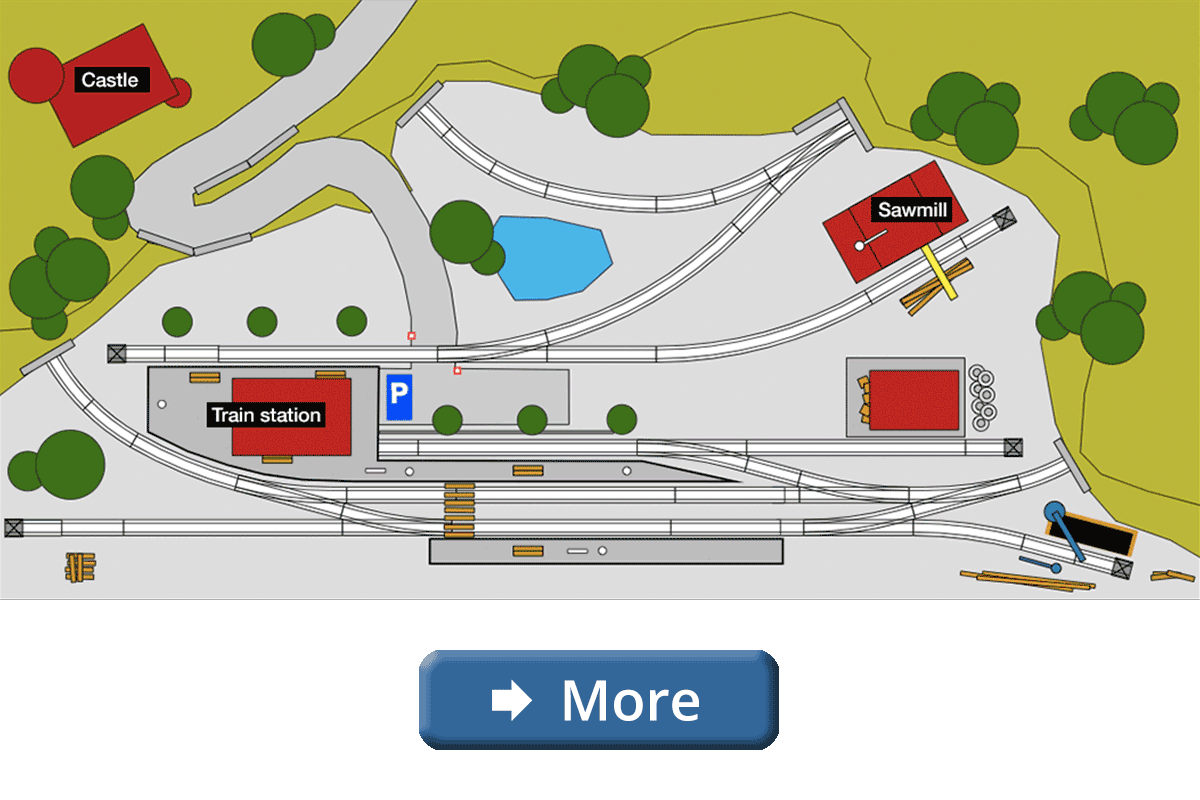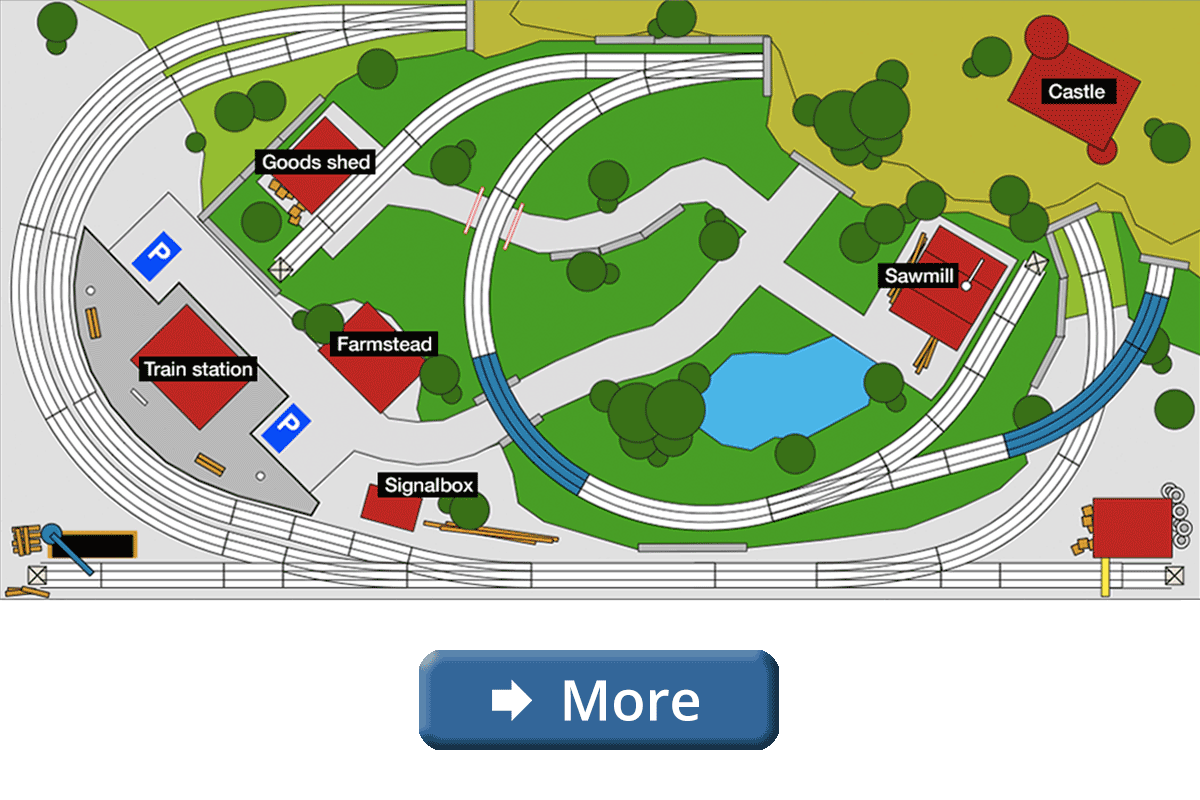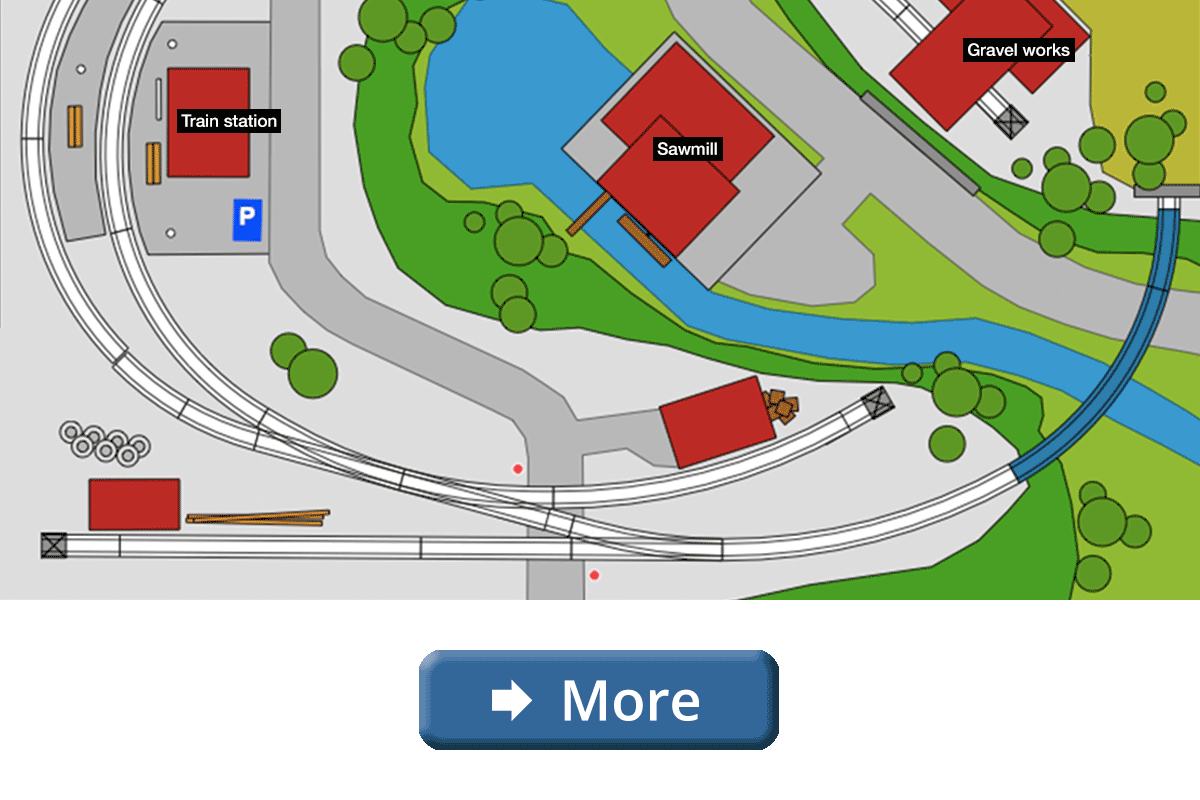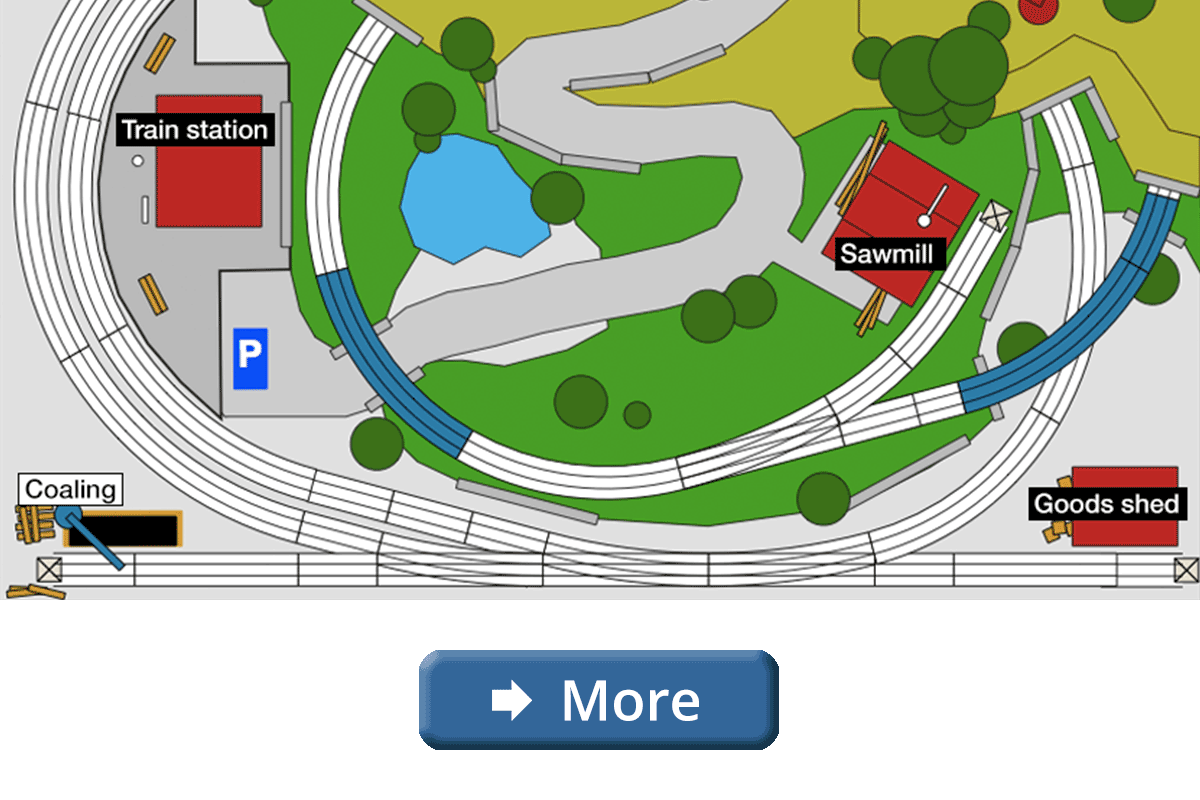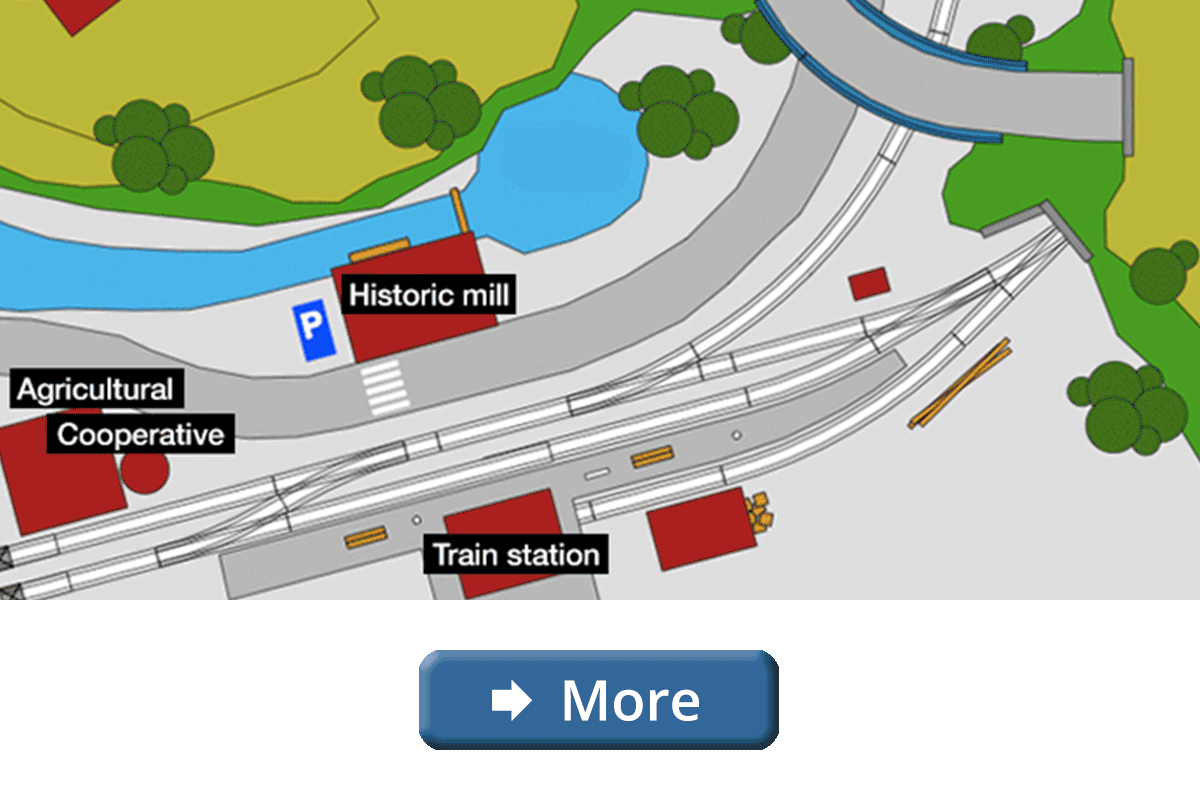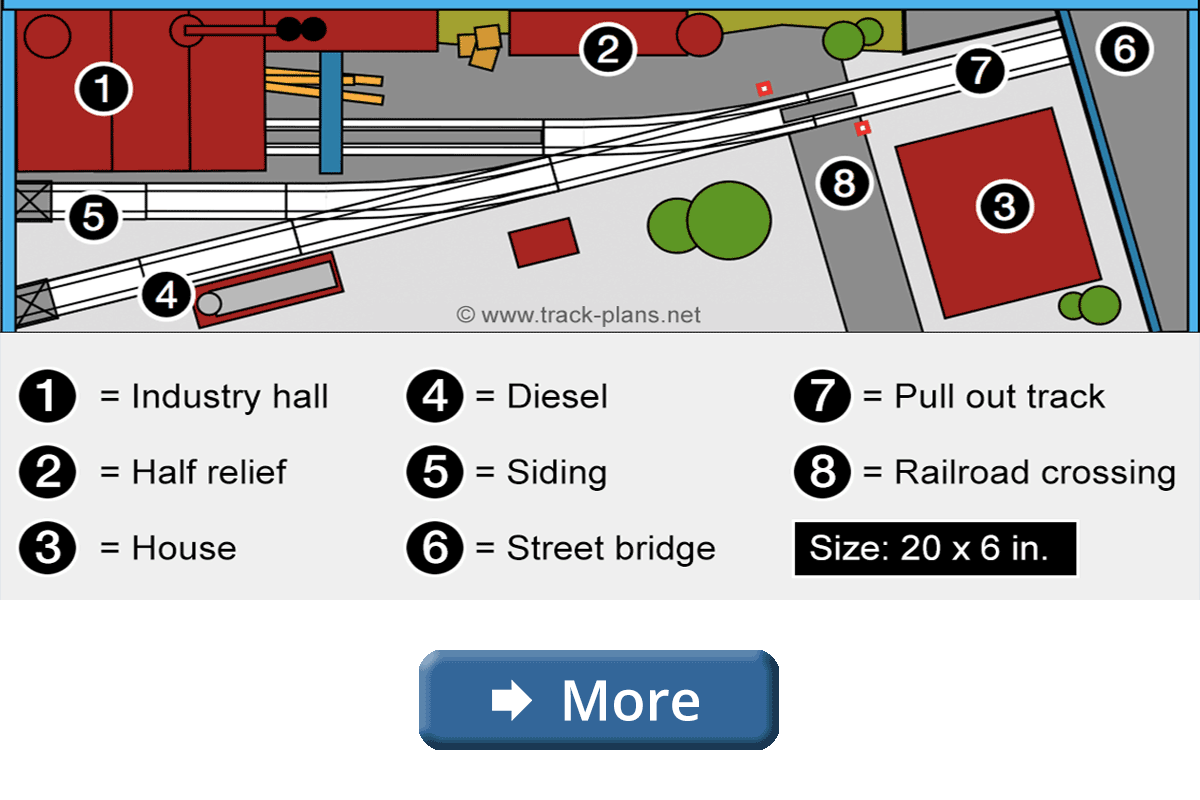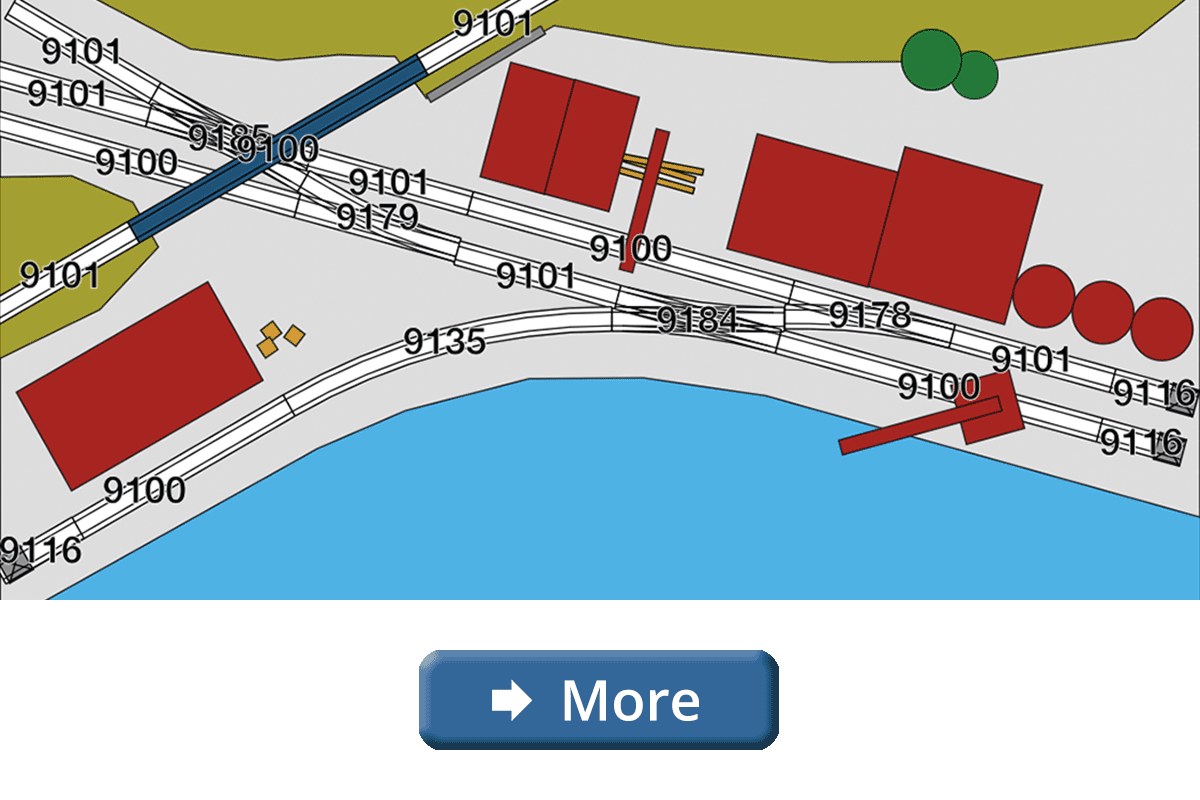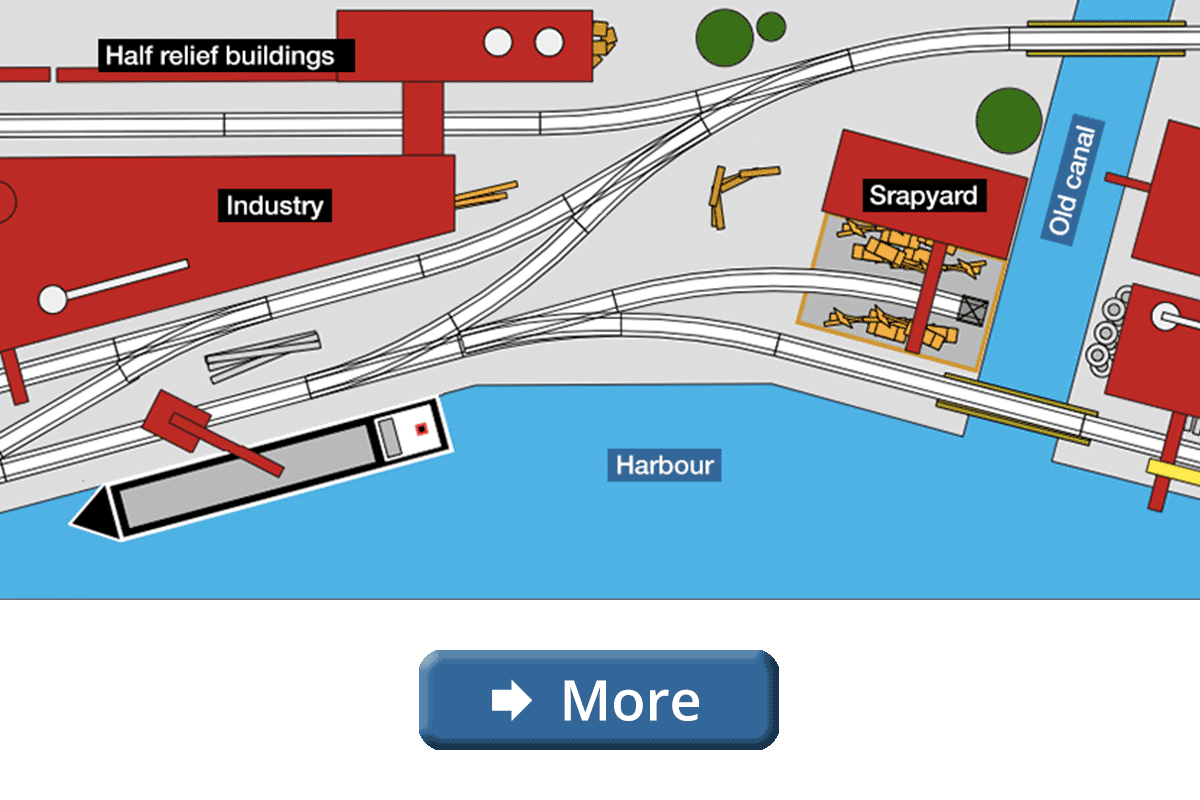“The Fake Terminus”
Description: Big terminus station, long trains, busy multitrack-track line, urban, Kato Unitrack. A remarkable track plan on 8′ x 4′. With fotos!
More: 4 x 8 N scale track plan
Going extremely puristic
Description: An extraordinary 4 x 8 N scale layout for KATO. Long trains, busy multitrack-track line, urban.
More: 4 x 8 N scale layout
Large N scale track plan, L shaped
Description: Metropolitan scenery, huge train station, rail yard, loco depot & facilities galore on 7′ max length!
More: L shaped track plan & layout N scale
“Rhine Valley”
Description: You like impressive landscapes? Then this KATO L-shaped track plan is a must-see! No gradients!
More: N gauge train layout
Nice Harbor on 3 x 7
Description: Ships, cranes & shunting. But long passenger trains can also run. Designed for KATO Unitrack. Many Fotos!
More: Track plan N scale harbor layout
3 x 7 layout: ” 6 trains on 2 loops”
Description: Nice 3 x 7 layout for all those who just want to see long trains running on ovals. No slopes – easy to build!
More: 3 x 7 N scale track plan & layout
Breathtaking alpine panorama, 3 x 6
Description: Busy single-track railroad line, bridges, mountains, gorges, water reservoir, huge dam. With fotos!
More: N scale model train layout
Dog-Bone track plan 3 x 6
Description: All about the dog-bone concept and a nice layout idea with an impressing bridge.
More: Dog-bone track plans
Figure 8 track plan
Description: A single-track branch line that winds through a lovely landscape. 3 x 6 N scale track plan, based on the figure “8”.
More: Figure 8 N scale track plan & layout
Extensive loco depot with turntable, 3 x 6
Description: Loco depot with all what your loco collection needs: Turntable, roundhouse, tons of facilities.
More: Track plan for N scale turntable & locomotive depot
3 x 6 track plan with large station
Description: Long trains, urban station, forking main lines. All in a surprisingly compact size.
More: 3 x 6 N scale layout
Industrial layout, 3 x 5
Description: Track plan for a complex switching layout. Blast furnace, steelworks, point to point. Can you taste the soot?
More: Switching layout N scale
“Junction Station”
Description: 2-track main line, 1-track branch line forking off, junction station. All on compact 3′ x 5′.
More: N scale train layout
3′ x 5′, rural scenery
Description: Runaround loop on two levels, charming landscape, interesting train operations!
More: 3 x 5 N scale track plan + layout
Timesaver & Inglenook
Description: Shunting like a champion on 5′ x 30”. This exciting layout integrates two popular shunting modules.
More: Shunting layout timesaver & inglenook
Harbour on 3′ x 4′
Description: Seagulls galore! Port, ships, cranes, silos, sidings. And we reveal the secret of a sluice basin.
More: 3×4 N scale layout
KATO N gauge plan
Description: Rural idyll on 2′ x 4′. Small track plan realized with the popular Kato N scale track
More: KATO N scale
2 x 4 track plan (Fleischmann)
Description: Another small N scale track plan on 4 x 2. Oval as main line + shuttle train line (commuter)
More: 2 x 4 N scale track plan
2 x 4 track plan (Kato Unitrack)
Description: A cute layout that has all on 2′ x 4′. Lots of shunting possibilities!
More: N scale small layout
Cute track plan for beginners
Description: Coffee table size 3 x 2, idyllic, quick and easy to build. With fotos!
More: N gauge model railway layout
Challenging Kato 2 x 3 track plan
Description: Nice & rural scenery. And why I call it “Die Brezel” (= the pretzel)!
More: N scale track plan 2×3 folded oval
Single-track branch line, idyllic scenery
Description: Small N gauge track plan on 40” x 23”, romantic landscape, castle, tunnels, hills. Nice fotos!
More: N gauge small layout
Tiny, tiny: 20” x 6 ”
Description: See what is possible on 20 x 6 inch. Industry, shunting, switching layout. With fotos!
More: Micro N scale layout
N scale shelf track plan
Description: Track plan for a small switching layout that fits on a book shelf. With fotos!
More: N scale shelf layout
Shelf layout 4′ x 16”
Description: Switching layout, port with old canal
More: N gauge shelf layout
Why should I opt for N scale?
Many model railroaders consider N scale to be the best choice for the hobby at home. Larger gauges like HO take up too much space, smaller gauges like Z may be too tiny.
About N scale
The distance between the left and the right rail is 9 millimeters. N scale model trains were first introduced in 1962 by the German model railroad manufacturer Arnold. The letter “N” was seen as an abbreviation of the German word “Neun” (= “9”).
This definition is still very popular today. In many other languages the number “9” also begins with “N” when pronounced.
Nine Millimeter corresponds to 0.354 inches. This is always the net distance for N gauge tracks. However, the size of N scale vehicles, buildings or locomotives varies internationally. Scale ratio in the United Kingdom is 1:148, in Japan 1:150. Most countries use the scale ratio 1:160, by name Germany and the USA.
Radii, turnouts and general dimensions
Standard N scale curve radii are sometimes designated with a preceding “R” followed by a number. The smaller the number, the tighter the curve radius. R1 can have a radius less than 8”, which is a very tight curve. There are even tighter radii, but these are only suitable for short wagons, streetcars or special sceneries like micro layouts.
Larger radii like R4 may have 17” radius or even higher. This looks nice, but is still not realistic. For explicitly prototypical wide curves better use flex tracks. However, laying flexible tracks will require more work.
N scale turnouts and crossings often have an angle of 15 degrees. Slimmer or a larger angles are available, too.
N scale track planning: Slopes and ramps
If the track layout runs over several levels, it’s necessary to determine the net headroom between the levels. This value defines the length and gradient of ramps. It’s also an issue for bridges, overpasses and tunnels.
Electric locomotives with catenary need more headroom than diesel or steam locomotives. Roughly said, routes with overhead lines should have at least 2 inches net clearance height in N scale. You can reduce that value for lines without catenary. The best way is just to place the locomotive on the track and measure it.
A rule of thumb says that 2.5% gradient is fine. But this is only a theoretical value. However, short trains or locomotives with high tractive power can manage steeper gradients, whereas long trains need a flatter gradient.
N scale codes
The code defines the net height of the rail. Two codes are common in N scale:
- Code 80: Net rail height is 0.080 inches (= 2.0 mm). Most N scale track material is based on this code
- Code 55: Net rail height is 0.055 inches (= 1.4 mm). Advanced N gauge model railroaders prefer this code, because it looks more realistic
- There are even smaller N scale codes for high end model making like code 40. But they are rare. You have to build such rails yourself
Finding the best N scale tracks
Good manufacturers for N scale tracks are located all over the world, especially in USA, UK, Japan and Germany. Choose that track material, which meets best your individual preferences. The following checklist may help you:
All N scale tracks can be combined. If necessary, manufacturers offer special connectors.
N scale manufacturers
If you are new into N scale model railroading, here a list with well known manufacturers in alphabetical order. It’s only a small selection, including the country where the company was founded. Keep in mind that some brands meanwhile may have new owners in other countries. Some companies do not offer tracks or rolling stock. Instead, they are specialized in N scale accessories like buildings, bridges, signals or digital control.
